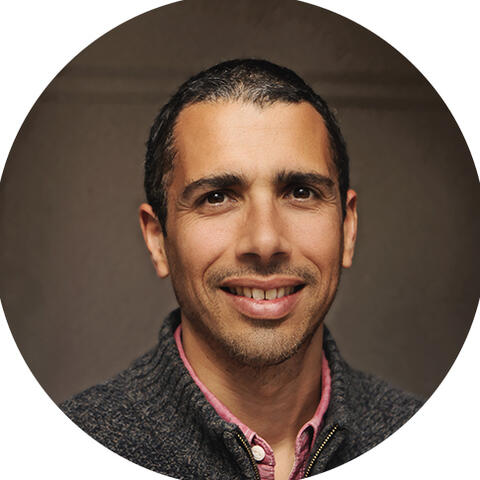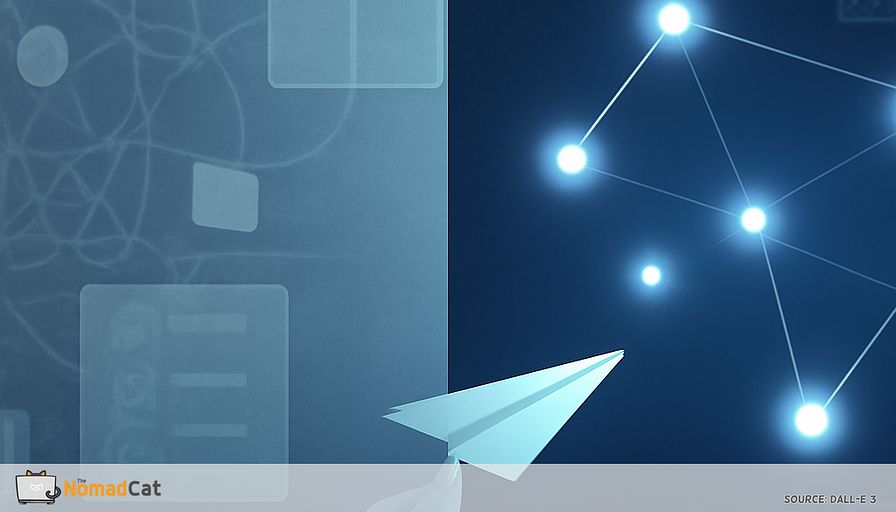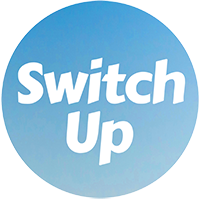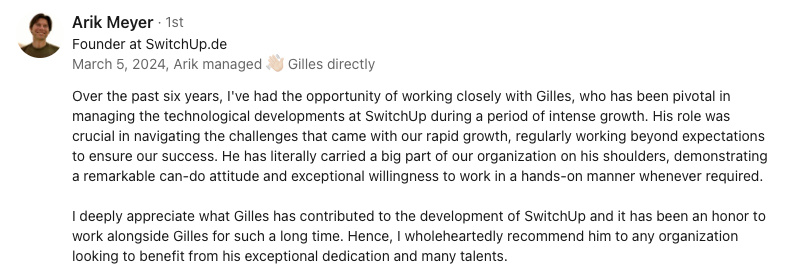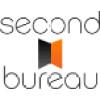Abstract:
The article explores the concept of minimalist networking for tech professionals, emphasizing that meaningful, lasting connections can be maintained through small, timely gestures rather than constant outreach or complex systems. Drawing on personal experience from startup work and research on professional relationships, the author argues that traditional networking advice—like frequent check-ins or elaborate CRMs—often leads to burnout and busy-work without genuine results, especially for independent workers. Instead, minimalist networking focuses on intentionally choosing a few trusted contacts, reaching out with relevant, low-pressure messages such as sharing useful articles or brief congratulations, and accepting that some connections will naturally fade. The article highlights the use of simple tools like spreadsheets or Trello for easy contact management, suggests ready-made scripts for stress-free follow-ups, and stresses the value of authentic, brief communication in tech. Real-world examples show how even a single, well-timed message or a public update can lead to renewed opportunities and collaborations. The piece also acknowledges the unique challenges faced by tech independents—such as isolation and the lack of a company brand—while arguing that a minimalist approach helps balance visibility with energy conservation. By letting go of outdated networking myths and focusing on quality over quantity, tech professionals can build authentic relationships without overwhelm, making networking both sustainable and enjoyable.
Maintaining professional connections in tech can feel exhausting. Chasing new contacts, sending updates, keeping up with conversations—it quickly gets overwhelming. For a long time, I felt pressure to network in ways that just turned into busy-work and didn’t really help. In my experience working independently, I found that constant outreach rarely led to genuine opportunities. There’s another way to do this.
This article is about minimalist networking and how it’s helped me build lasting, meaningful connections without burning out. I’ll share how I let go of some classic networking ideas, use small gestures to stay in touch, and focus more on depth than numbers. You’ll find tips for short, simple follow-ups, easy tools for organizing contacts, and ideas for low-pressure outreach. I’ll also explain why letting some connections fade is actually needed if you want to stay energized and real.
If you’re tired of endless check-ins, or just wish for a simpler approach to networking, these minimalist ideas might help you stay visible and authentic. Let’s see how little actions can beat even the fanciest CRM.
Rethinking connections
Letting go of networking myths
There’s a running joke that if you don’t have a color-coded CRM and send twenty LinkedIn messages a week, you’re not really networking. I used to believe that too. When I was building my science popularization company, I spent hours each week on admin work—tracking every contact, sending updates, trying to keep every conversation alive. But honestly, it just made me tired. Some studies say up to a quarter of a freelancer’s time goes to admin, not real client work. Even the most high-tech tools often get ignored because they’re just too much. In my early startup work, juggling business growth and investor updates, I learned quickly that overcomplicated systems become more burden than help. There are easier ways to stay connected.
Small gestures, real relationships
This makes space for a more focused approach. I’ve noticed that small, thoughtful gestures—like forwarding a useful article or just sending a quick ‘congrats’—keep professional bonds alive better than non-stop high-touch communication. Research on professional relationships points out these tiny actions are enough. Instead of overwhelming your contacts (and yourself), a quick, relevant message usually works best. A quick message is like a small seed—it can grow into something bigger over time.
Minimalist networking fits tech life
Minimalist networking is about focusing on a handful of valuable relationships and letting others naturally slip away. For me, as someone who’s worked solo in Beijing and Lisbon, this feels much more real and sustainable. Some productivity experts suggest intentionally choosing who really matters, instead of stretching yourself too thin. Others say it’s important to respect boundaries and avoid forcing relationships. Let’s look at the main ideas that make minimalist networking work.
Minimalist values for tech independents
Intentionality: build a small, trusted network
Being intentional means picking who matters most, not trying to keep every old contact going. When I scroll through my messages or contacts, I see only a handful I really trust. With fewer but stronger connections, it’s easier to be authentic and involved.
Relevance: reach out when it matters
Relevance means reaching out only when it makes sense—when you have a resource to share or an idea that actually matters to the other person. These simple touchpoints can look like:
- Sharing an article or tool that solves a problem
- Offering a tip after a recent chat
- Sending a quick note about a milestone
Boundaries tie into this.
Boundaries: let some connections rest
Setting boundaries is about knowing when to let a relationship rest—and realizing you don’t need to keep every contact alive forever. Letting some go is healthy, giving you more attention and energy for what matters. This is key for anyone who wants to avoid burnout. Let’s see some hands-on tools for actually doing this.
Light-touch follow-up toolkit
Ultra-brief check-ins and micro-gestures
How does this look in a tech job? After shipping a feature, I might say “Nice work on that!” in Slack or drop a link in a group chat. These small gestures—even just an emoji or a single sentence—go a long way. Research backs up that small moments of attention can keep relationships alive.
In practice, a one-line comment on GitHub or a single emoji can keep up connections. The best part? These fit right into your day. For example:
- Leaving a “Thanks for the update!” on a pull request
- Sending a quick “Congrats on the launch!” in LinkedIn
- Dropping a thumbs-up emoji somewhere
But is quality more important than quantity? I think yes. A single, timely gesture stands out more than regular, boring check-ins. I remember someone who sent a generic “Hope you’re well” every month vs. someone who sent a note about a real achievement—I always remembered the second person. Tracking this doesn’t have to be hard.
Simple tools for minimalist tracking
Standard CRMs get overwhelming fast—they’re often made for big teams. Most freelancers end up ignoring them after a while. When I switched to a simple spreadsheet for tracking contacts, I noticed a 30% increase in meaningful follow-ups over three months. Lighter tools like a spreadsheet, Trello, or Notion board can help you keep track without extra work. A basic system can be as simple as:
- Name
- Last chat date
- Quick notes (“Shared AI ethics article”)
- Next reminder date (if you want)
This kind of table, it keeps things doable. You can spot who you’ve lost touch with and get a quick nudge for follow-ups. Maybe a calendar alert once in a while is all you need. With these easy systems, you keep relationships warm but avoid overwhelm. Here are some easy scripts for low-pressure outreach.
Templates and scripts for low-pressure follow-ups
Short scripts that offer a clear opt-out, like “No need to reply, just thought you’d like this,” lower everyone’s stress. This shows you respect the other person’s time. Some simple templates:
- Referencing a past talk: “Saw this and thought of our chat about open source tools.”
- Sharing a resource with no reply needed: “Thought you might like this article on AI ethics—no pressure to reply!”
- Congratulating someone: “Congrats on your new job!”
And for pitching yourself for a podcast or guest writing:
- “Hi [Name], I noticed your podcast covers [topic]. Given my background in [brief experience], I’d love to share insights on [specific subject]. If you’re open to it, let me know! No pressure.”
Using these helps you build a reputation for being thoughtful and not pushy—qualities most people like in tech. You don’t have to overcommit; you can do more with less and still have solid relationships.
Providing value without burnout
The power of micro-gestures
Small actions have impact. Forwarding a useful article, making one good introduction, or suggesting a fix to a problem all count as tiny but meaningful efforts. Studies show these short messages, if timely and relevant, keep relationships going. Examples include:
- Sharing a short resource that helps with a current challenge
- Sending a quick congrats
- Offering a tip after a quick tech chat
Minimalists in tech care more about timing and relevance than constant outreach. I once introduced two colleagues for a project and, months later, that led to a new collaboration. Research suggests infrequent but relevant exchanges last longer than generic regular check-ins.
You don’t need to make grand gestures. The main thing is to have good timing and share what matters, not force things. This avoids burnout and keeps ties strong.
Knowing when to step back
Minimalists know you can’t keep every tie alive. Experts recommend checking your network regularly and focusing where there’s real value. Letting go of outdated ties frees up space for better ones. Even a respectful bye message helps; something like, “Thanks for all your insights over the years—happy to reconnect in the future,” closes things on a good note. These simple follow-ups help your reputation and leave doors open.
Minimalist branding
How minimalist communication shapes perception
In tech, brief communication is respected. Many leaders are known for short, direct messaging. Research says clarity shows competence and respect for time—values prized in fast-moving work. A message that’s short and to the point signals you care about efficiency and trust. This style builds trust, because people know you won’t waste their time.
Minimalist follow-ups also show you respect others. In many cases, a quick relevant Slack or LinkedIn message is more appreciated than a long email. Career coaches often agree this approach makes a positive impression and fits the autonomy and clarity tech workers value.
Having a light-touch, non-intrusive style can become part of your professional image. It shows you’re thoughtful, efficient, and can work independently. This approach is seen in groups like Basecamp, where simplicity is key. There are ready-made scripts out there to make this style even easier.
Real-world examples and minimalist templates
Prepared templates help with nearly any situation, whether inviting someone to a podcast or reaching out for a project. A set of short scripts makes consistent outreach less stressful and keeps your messages simple. Good sources include business review articles, template platforms, and blog resources.
Case studies show even a single short check-in—like sharing an article or sending an annual update—can lead to referrals or new projects months later. A quick LinkedIn share or yearly message has unexpectedly led to renewed collaborations for me. This highlights the long-term impact of minimalist follow-ups.
Public profile updates (sharing a project on LinkedIn, posting on GitHub, or a short tweet) help you stay visible without messaging everyone directly. These subtle updates let people see your work and sometimes bring new connections. And if you need to revive an old link, a simple note can reopen the conversation.
Reigniting old connections
Why dormant ties matter
Picture an old colleague popping up with a new idea. It’s more than a nice surprise—dormant connections can offer unique perspectives and fresh opportunities. Research shows these older contacts often have access to insights and networks you might miss with your current circle.
Reaching out to these people often leads to job tips, referrals, or interesting projects because they connect you to different groups. Some well-known research backs up the power of these ‘weak ties.’ But how do you make that first move without it being awkward? Simple, direct messages usually do the trick.
Minimalist reactivation strategies
Often, just one line is enough: “Hi [Name], been a while! Hope you’re well. Open to reconnecting?” Keeping things low-key works best.
Adding a little context helps make it personal and not transactional. For example:
- Mentioning a prior project: “Saw this, thought of our work on [project].”
- Sharing a link related to their interests
- Congratulating on something new
Starting with a quick LinkedIn note or a post comment makes it easy to ‘test the waters’—not too much pressure for either side. I find that starting small and thoughtful is usually the best move.
Challenges for tech independents
Barriers
Working alone in tech can feel isolating. After moving to Lisbon, I struggled with feeling disconnected from my old network, but minimalist outreach helped me rebuild meaningful ties without feeling overwhelmed. Without built-in office networks, it might be harder to keep relationships alive or find new opportunities. For example:
- Building rapport without in-person meetings
- Juggling relationships across time zones and platforms
- Staying seen when projects and teams change all the time
Staying credible and visible gets tough when you don’t have a company brand behind you. Building trust is also a challenge on your own. Without an established company logo, showing you’re reliable among lots of other freelancers isn’t easy. Minimalist approaches help avoid burnout, but can risk making you invisible if overused. The key is balancing being seen with not getting overwhelmed. Some surveys say client retention is a top worry, but burnout is close behind. The trick is hitting a healthy middle.
Where advice falls short
Most advice is about meeting new people—go to more events, add more LinkedIn contacts, send more messages. But for tech independents, the challenge is keeping connections alive, without getting lost in the noise or the admin work. There’s not much guidance out there for using simple tools or tracking relationships without too much effort.
Remote work and fast-changing tech shifts make traditional networking tips feel out-of-date. Some hurdles:
- Building rapport without in-person meetings
- Juggling relationships across time zones and platforms
- Staying seen when projects and teams change all the time
For me, minimalist, value-focused methods filled this gap—choosing carefully when and why I reach out, instead of just ticking boxes. Instead of chasing every lead, a few well-timed check-ins or public updates help keep you on the radar, without burning out.
Minimalist networking is not about piling up contacts or sending a flood of updates—it’s about building genuine, sustainable relationships with just enough effort to keep it real. When I focus on small gestures, relevant check-ins, and letting some contacts rest, I save time and keep my energy for what counts. This approach fits well for tech independents, where being authentic and efficient is key. With lightweight tools and low-pressure outreach, you stay visible but avoid feeling overwhelmed. If you let go of the old networking habits and focus on quality over numbers, relationship-building can actually become enjoyable. Sometimes, changing one small way of connecting is all it takes to see a difference.
